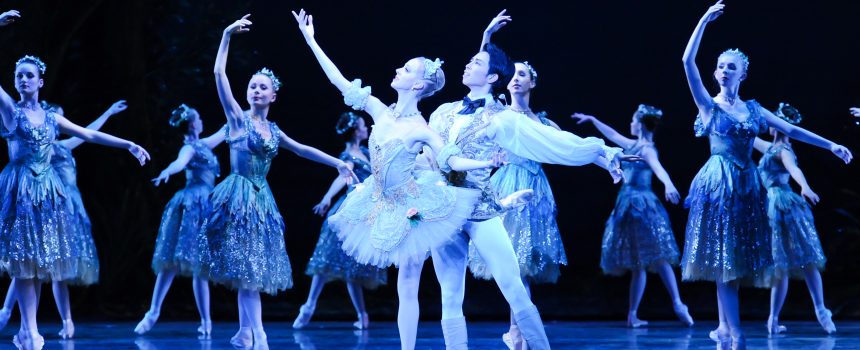The Sleeping Beauty
Story Ballets: The Sleeping Beauty

Inspiration for a ballet can come from anywhere, but some of history’s most beloved ballets are inspired by stories. Fairy-tales, classic fables, dramas and tragedies have spurred some of the most magnificent productions, leaping from the page to the stage. Once such classic is The Sleeping Beauty, which will close Pittsburgh Ballet Theatre’s 2018-2019 season with the PBT Orchestra.
The story of Sleeping Beauty dates back hundreds of years to an oral history that originated in France in the 1500s, weaving the tale of a princess, cursed into a deep sleep. The fairy-tale we know and love today was published in 1697 as The Sleeping Beauty in the Wood by Charles Perrault, and then famously adapted by the Grimm brothers, omitting the darker elements of the story.
While early versions of The Sleeping Beauty ballet based on Perrault’s text were performed as long ago as the 17th century, it’s the collaborative efforts of director Ivan Vsevolozhsky, choreography Marius Petipa and composer Pyotr Ilyich Tchaikovsky that modern audiences know best. The trio teamed up in 1890 for a showcase of their collective talents.
In its first iteration, Vsevolozhsky, Petipa and Tchaikovsky’s The Sleeping Beauty was roughly four hours long, making it one of the most lengthy story ballets in history. Since then, adjustments were made to reduce the run-time and even further engage audiences. PBT’s first performance of The Sleeping Beauty opened at the Benedum Center in 1979, and 40 years later we bring Princess Aurora and her friends back to the stage once again.
The Sleeping Beauty is a classic story ballet for good reason. It’s a tour de force of Petipa’s classical choreography full of your favorite fairy-tale characters, like Princess Aurora, her prince, the fairies and forest friends. Hear the fullness of Tchaikovsky’s magnificent score played live by the PBT Orchestra and step into the storybook in one of history’s most beloved story ballets.
